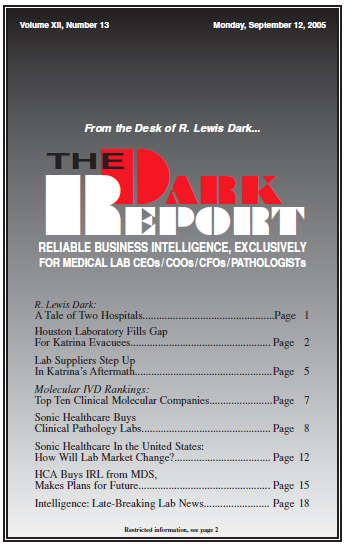CEO SUMMARY: Literally overnight, Houston found itself dealing with tens of thousands of evacuees fleeing the destruction in New Orleans and surrounding areas. Many evacuees arrived in poor health. The Harris County Hospital District laboratorians of Houston pitched in to create an emergency laboratory support system that was surprisingly sophisticated. Here’s how labs in Houston …
Houston Lab Fills Gap For Katrina Evacuees Read More »
To access this post, you must purchase The Dark Report.


